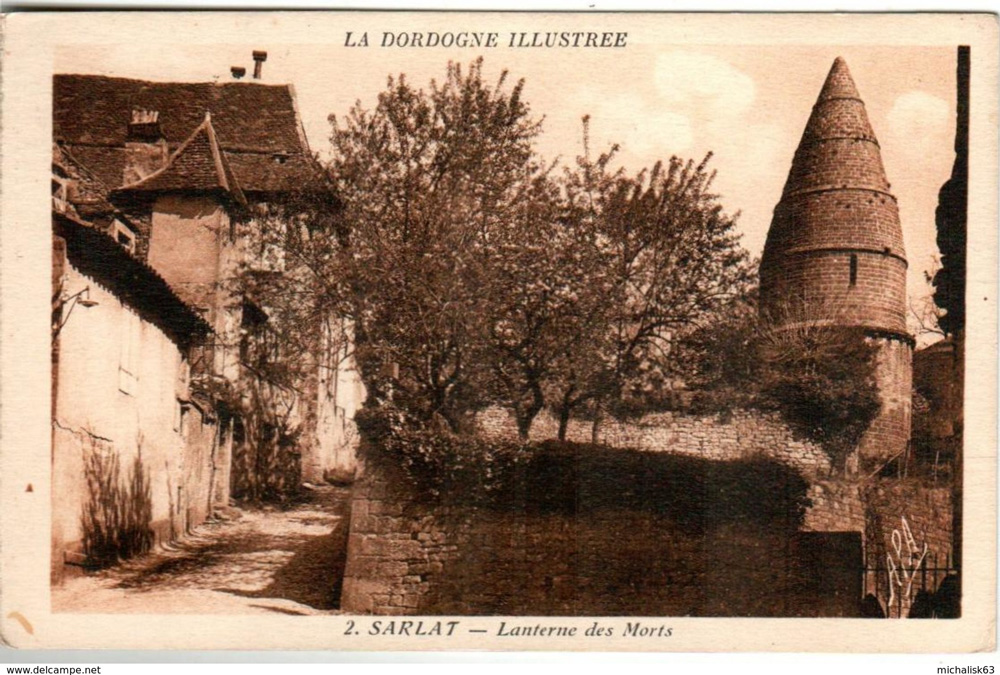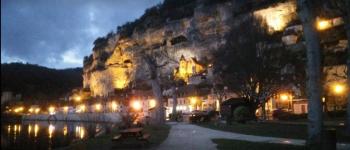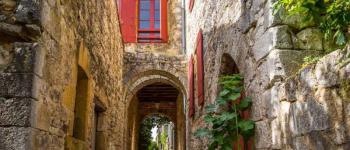
The lantern of the dead in Sarlat was probably built in the last third of the 12th century, around 1180, in the Saint-Benoît cemetery, behind the chevet of the Saint-Sacerdos cathedral.
This building was also called the Tower of the Moors.
Legend...
Jean Tarde, in his Chronicle, reported the legend according to which Saint Bernard, who came to Sarlat in 1147, would have blessed breads whose miraculous virtue healed the sick who fed on them.
The lantern would have been built to commemorate his passage.
This legend also earned him the name Tour Saint-Bernard.
In the 17th century, we lost the memory of the use of this building and we wonder about its usefulness.
Its destination became enigmatic.
In 1693, Canon de Gérard wrote to Mabillon: "We don't know what it is".
For some historians, the presence of long, narrow semicircular openings seem destined to let the light through.
It is said to be a lantern of the dead, that is to say a building in which a lighted lamp is hoisted to guide the souls of the deceased.
Others see the room on the first floor as a chapel serving as a repository for the dead.
The second level could then be accessed by a ladder to place a lantern.
Jean Tarde indicates in his Chronicle that in 1561, Jean del Peyrat was buried "in the lantern of the cemetery which is in a fake chapel with a dome on the inside and a pyramid on the outside, size in the middle of the cemetery".
The significance of this two-storey lantern tower can only be found by considering the Easter liturgy of the 12th century, which was followed in an abbey dedicated to the Saviour from its foundation until 1317.
The lantern-tower would be an interpretation of the dome of the Holy Sepulchre of Jerusalem as it had been represented since the 4th century: a circular tower, with a door on the first level giving access to the Tomb of Christ, and a second level topped by a canopy with 12 columns.
On Easter Day, the monks came in procession to perform the liturgy of the "visit to the Tomb".
The monks could then sit on the pew in an exedra to meditate on the Resurrection.
Site Ranking
In the 19th century, Paul Abadie, diocesan architect, wrote to the Inspector General of Historical Monuments, on February 15, 1848, a long report with a sketch and a plan of the "sepulchral monument of Sarlat". He asked that excavations be carried out and that the "powder magazine" that the municipality had housed in "one of the rarest and most curious monuments that we have" be moved.
In 1852, he wrote a short letter to the minister in which he specified that the building was on land granted to a religious community and that the latter was planning to open a door to the east and blind the door to the west. He requests that the commune of Sarlat reserve ownership of the land and a 3-metre strip of land around it so that the religious community cannot claim it.
The lantern of the dead, the Saint-Benoît cemetery and the enfeux were classified as historical monuments on 22 November 1981.
Translated with www.DeepL.com/Translator
(free version)





